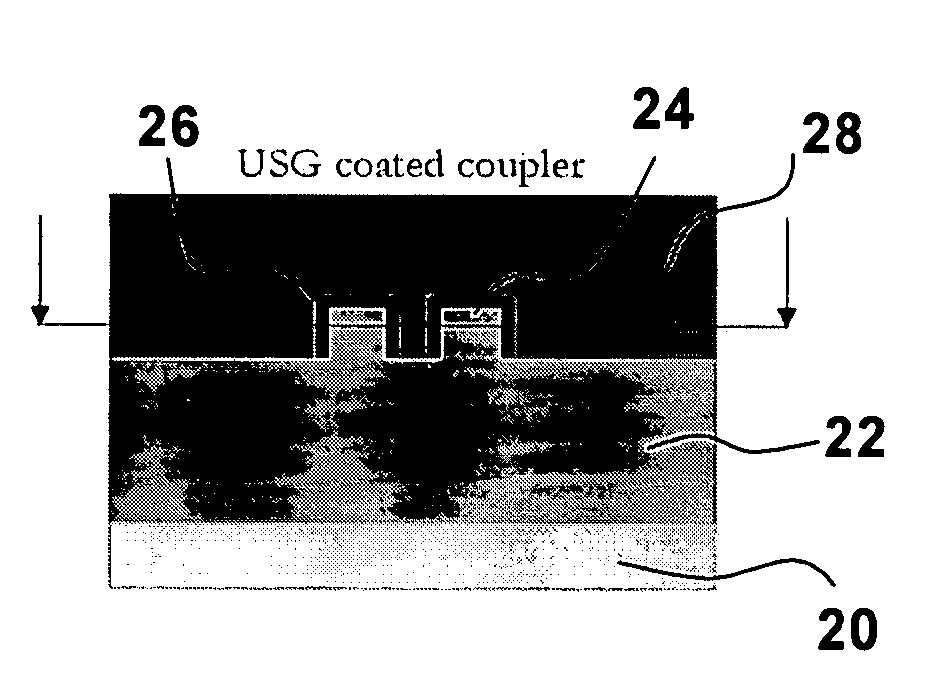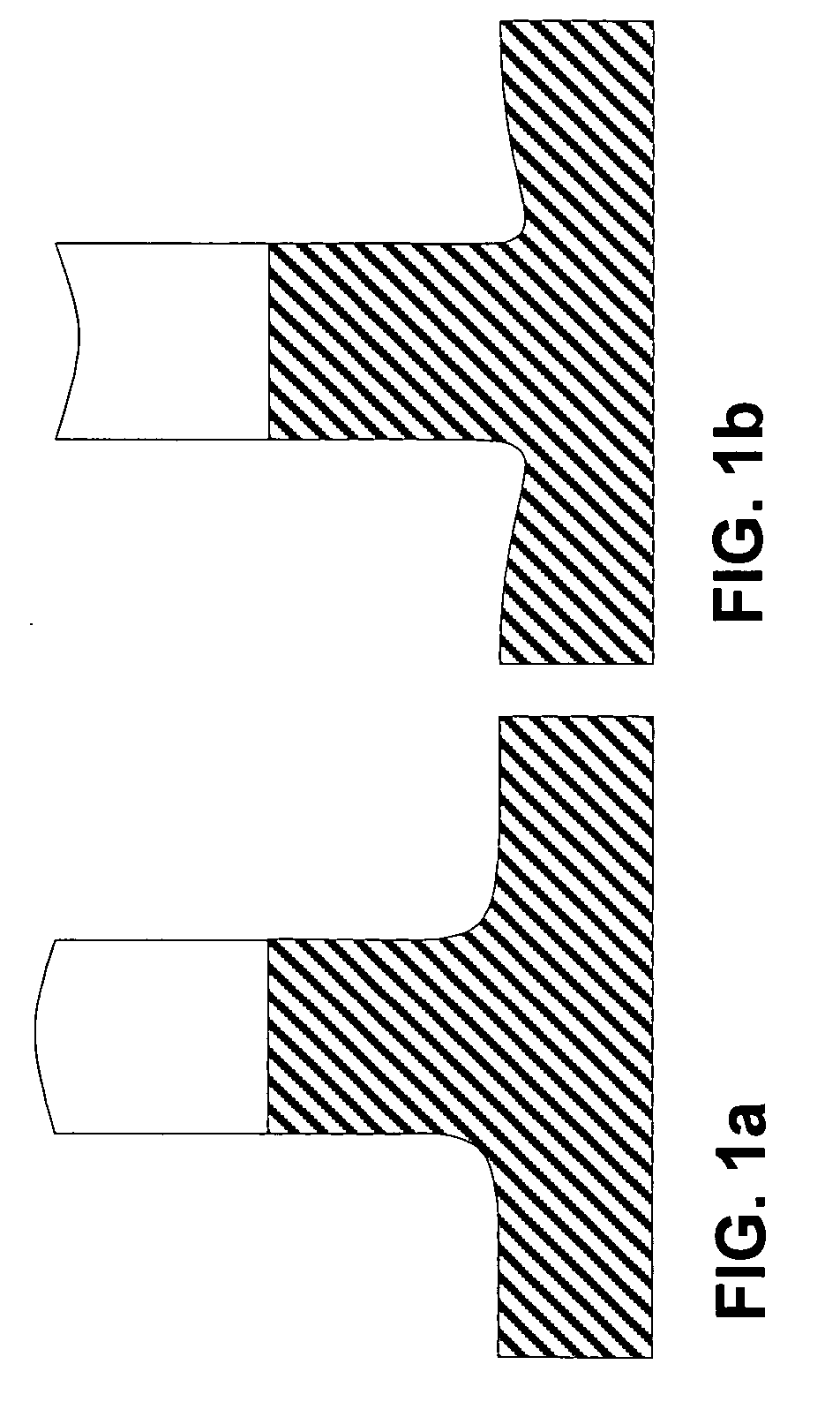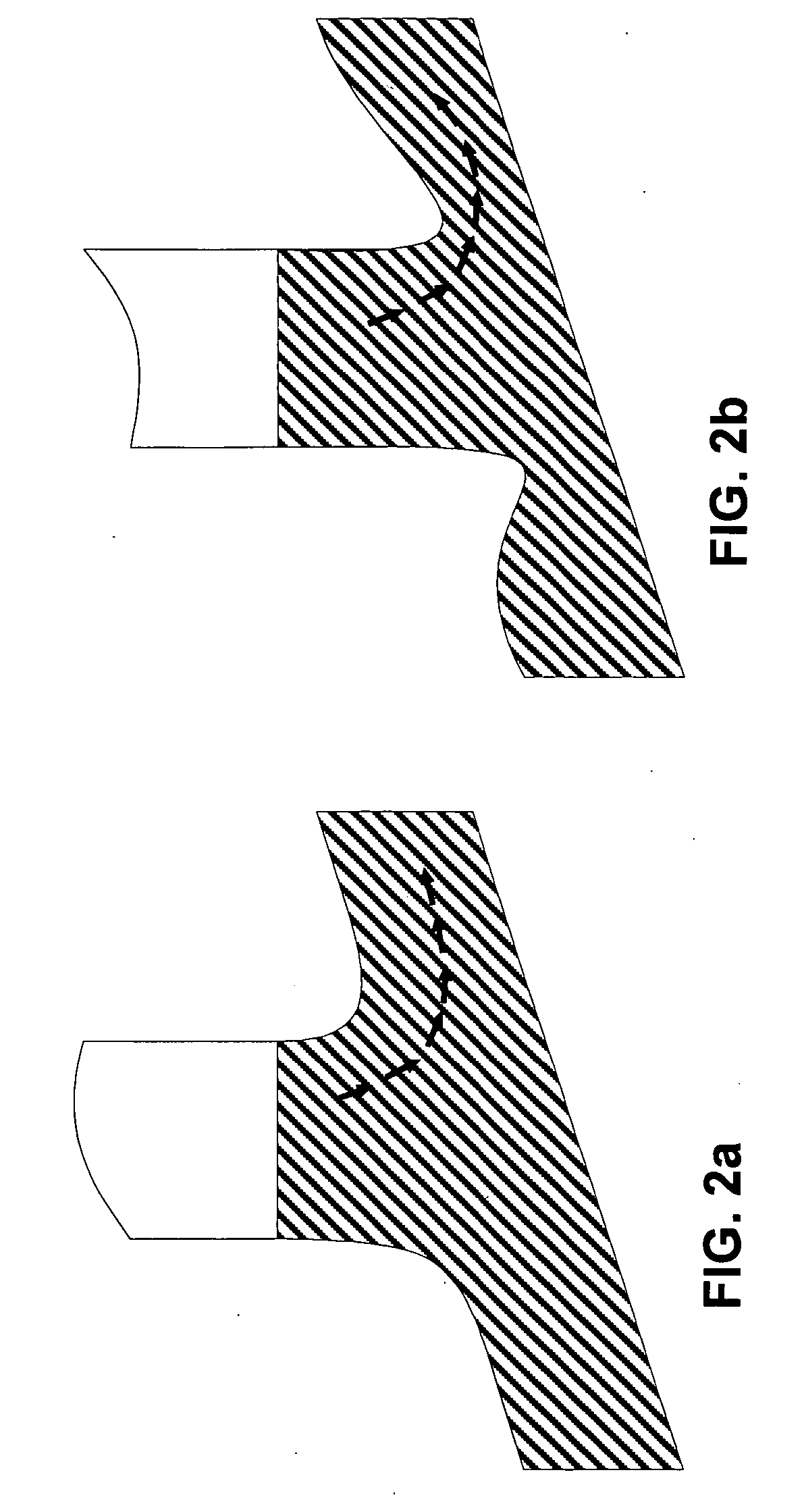Reduction of polarization dependence in planar optical waveguides
a planar optical waveguide and polarization dependence technology, applied in the direction of optical waveguide light guide, instruments, optics, etc., can solve the problems of reducing the difference in the effective index of the waveguide mode for the two polarizations, and the birefringence of the waveguide giving rise to undesirable polarization dependence properties, so as to reduce the overlap of propagation, reduce the cte mis
- Summary
- Abstract
- Description
- Claims
- Application Information
AI Technical Summary
Benefits of technology
Problems solved by technology
Method used
Image
Examples
Embodiment Construction
[0041] As discussed above, birefringence experienced in mode coupled devices is largely a result of thermal stress at the core / cladding interface caused by different coefficients of thermal expansion of the two materials during fabrication. Typically PLCs comprise a silicon substrate, cladding layers of borophosphosilicate glass (BPSG), and waveguide cores fashioned of germanosilicate glass (GSG) or phosphosilicate glass (PSG). The CTE of BPSG and GSG are approximately 3.4 ppm / K and approximately 1 ppm / K. Other materials used in PLCs, such as silicon oxynitride or aluminum oxide cause similar problems.
[0042] Stress induced birefringence in the cladding alters the cladding / core index profile of a waveguide differently for the TM and TE modes. As illustrated in FIG. 1a, the regular step function of an unstressed waveguide is raised and rounded for the TM mode permitting the TM light to pass through the core / cladding interface more easily. By contrast as seen in FIG. 1b, the refractiv...
PUM
| Property | Measurement | Unit |
|---|---|---|
| thickness | aaaaa | aaaaa |
| refractive index | aaaaa | aaaaa |
| length | aaaaa | aaaaa |
Abstract
Description
Claims
Application Information
 Login to View More
Login to View More - R&D
- Intellectual Property
- Life Sciences
- Materials
- Tech Scout
- Unparalleled Data Quality
- Higher Quality Content
- 60% Fewer Hallucinations
Browse by: Latest US Patents, China's latest patents, Technical Efficacy Thesaurus, Application Domain, Technology Topic, Popular Technical Reports.
© 2025 PatSnap. All rights reserved.Legal|Privacy policy|Modern Slavery Act Transparency Statement|Sitemap|About US| Contact US: help@patsnap.com



